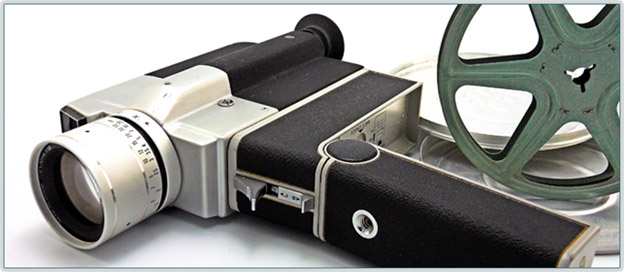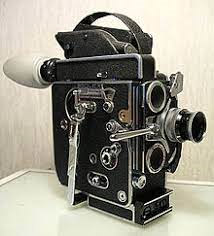History of 8mm & Super 8 Film

In todays world, where almost everyone has a personal cell phone equipped with cutting edge technology for capturing photos and video it’s hard to believe the significant impact 8mm film had on capturing family memories for the generation that grew up with it. Compared to today’s technology, these bulky cameras were considered a revolution at the time. From the 1930’s when they were introduced, until 1965 when Kodak introduced the Super 8mm Camera, these cameras were spotted at family BBQ’s, weddings and popular vacation spots capturing precious family moments!
But lets take a step back a little further! Eastman Kodak introduced 16mm Film back in 1923. His hope was to replace the 35mm Film of the 1920’s and create a market for amateur videographers. But he did more than that! 16mm film aided in redefining the next half century of film making! Unlike 35mm film which used combustible cellulose nitrate, 16mm was created using a base of non flammable acetate plastic and earned itself the nickname “safety film”. Another amazing feature of 16mm film is that it could be loaded in the daylight making it a game changer from 35mm!

In 1932, with increasing concerns of cost due to the Great Depression, Eastman Kodak company developed the standard 8mm film that would allow common families to be able to afford to capture their precious memories! Typically 8mm film was exposed down one edge of a 25 ft reel then it was flipped over to expose the other edge. During developing, the film was split down the middle and joined together to make a 50 ft roll of film.
8mm film or also known as Standard 8, has a frame size of 4.5mm x 3.3mm whereas Super 8 film has a frame size of 5.79mm x 4.01mm. In 1968 Super 8 film was developed.
One of its main purpose was to make the frame size larger, and the best way to do this was to make the sprocket hole smaller.
8mm film was built to last up to 70 years and if you have memories captured from 1951 or previous, your film may have reached its lifespan! With this in mind, you really should not wait much longer to have these moments preserved! Improper storage also damages film, so any film that is left to sit for periods of time really needs to be digitalized to ensure your memories are kept forever!
